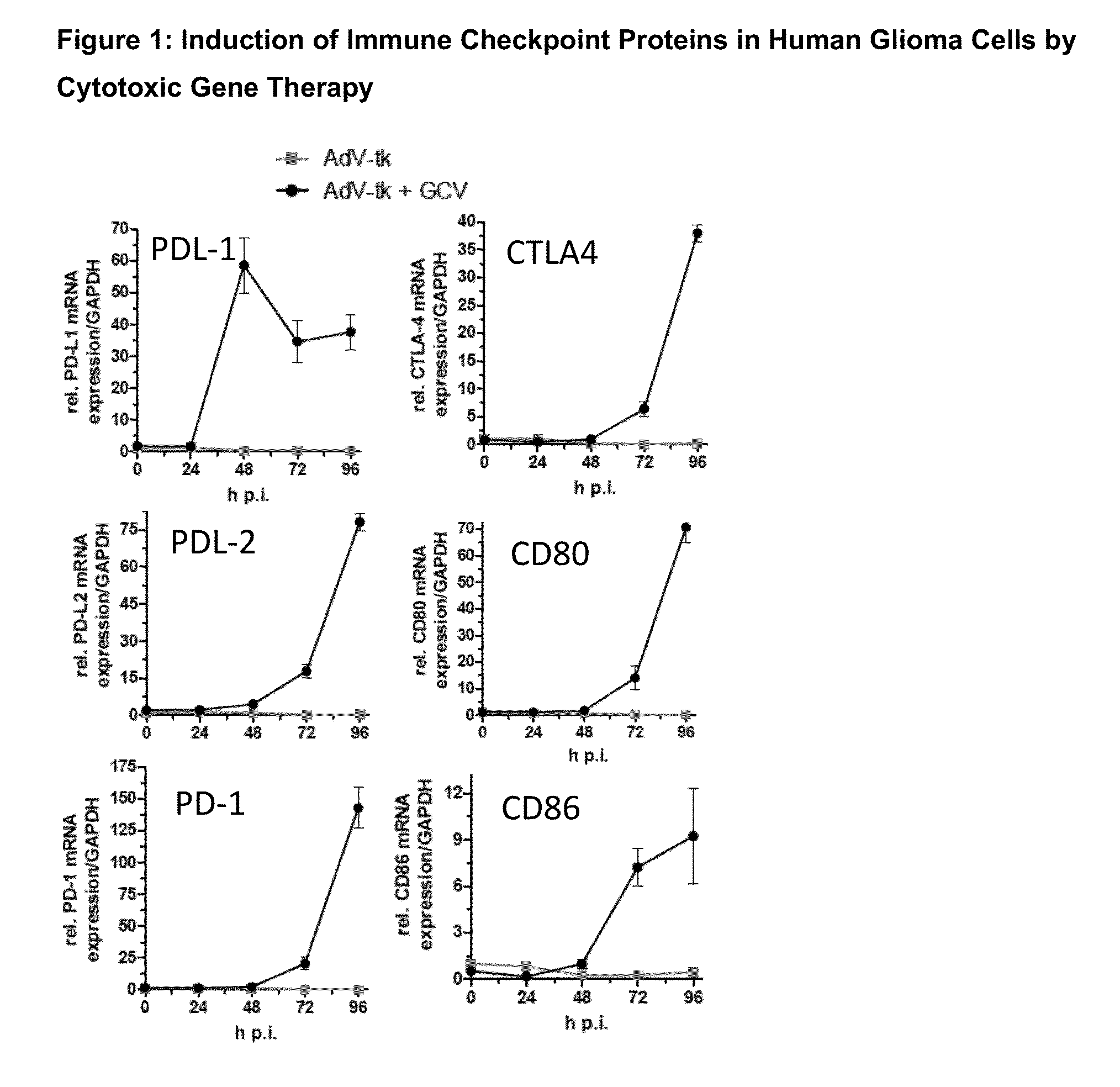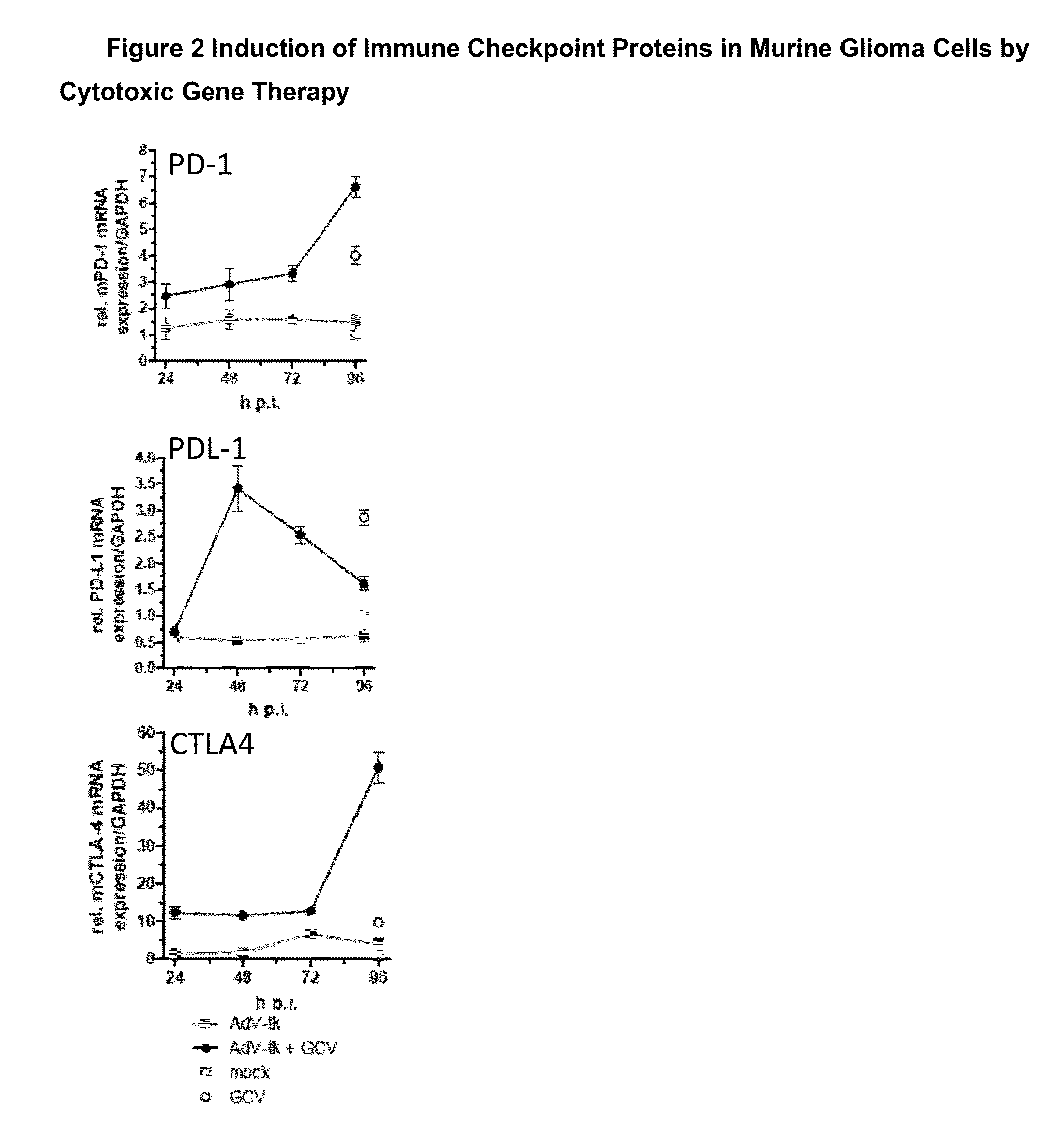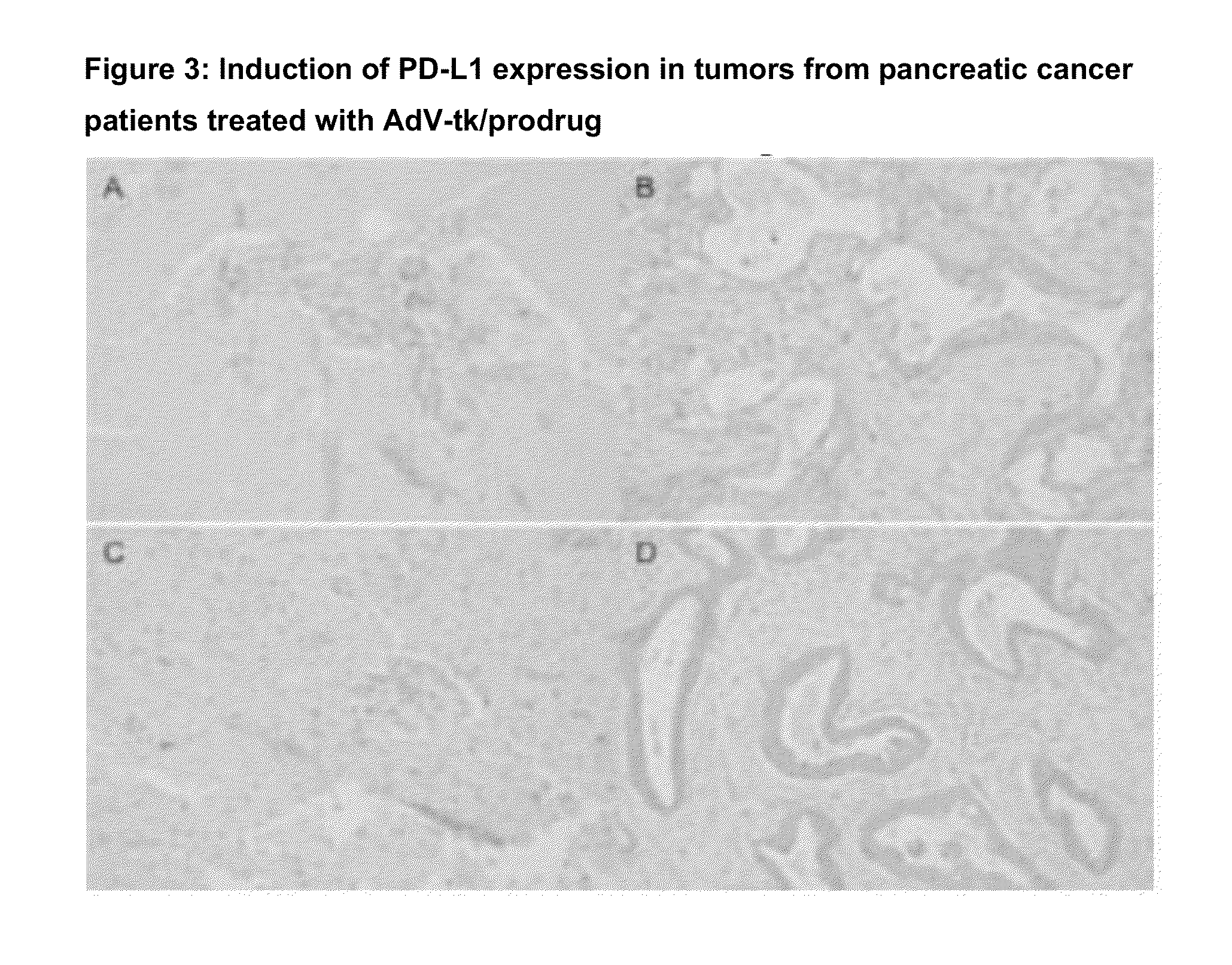Methods of Cytotoxic Gene Therapy To Treat Tumors
a cytotoxic gene and tumor technology, applied in the field of tumor treatment methods, can solve the problems of many patients recurring, formation of tumors, and inability to completely resect tumors
- Summary
- Abstract
- Description
- Claims
- Application Information
AI Technical Summary
Benefits of technology
Problems solved by technology
Method used
Image
Examples
example 1
AdV-Tk Mediated Gene Therapy in Combination with Checkpoint Inhibitors for the Treatment of Glioma
[0080]One application of this invention would be in the treatments of malignant gliomas patients where a craniotomy with resection of the tumor or tumors will be performed. At the neurosurgeon's discretion, this may involve stereotactic methods and / or intraoperative navigational guidance and / or intraoperative MRI or other radiologic guidance. Tumor resection may be partial or complete. After the tumor resection has been completed, freehand injections of between 10-1000 microliters of the AdV-tk virus will be performed by the neurosurgeon in the wall of the resection cavity at a number of sites ranging from 1 to 50 to a total volume injected of between 100 microliters and 5000 microliters. The total dose of the AdV-tk may range between 1×108 to 1×1012 vector particles. After the injections are completed, the remainder of the operation will consist of routine wound closure.
[0081]After com...
example 2
AdV-Tk Mediated Gene Therapy in Combination with Checkpoint Inhibitors for the Treatment of Pancreatic Adenocarcinoma
[0085]Another application of this invention would be in the treatment of patients with pancreatic adenocarcinoma. In this example, two courses of AdV-tk+prodrug will be delivered. Prior to the first injection, pathologic diagnosis of pancreatic adenocarcinoma will be made. For the injections that performed before surgery or injections to patents not receiving surgery, between 3×1010 and 1×1012 vector particles of AdV-tk will be delivered by Endoscopic Ultrasound or CT-guided injection into the pancreas in a total volume in the range of 0.5 mls to 4 mls. For patients receiving surgery, freehand injections, each of a volume of between 10 and 1000 microliters of the AdV-tk vector formulation, will be performed by the surgeon into each of between and 2-20 sites into the soft tissue of the retroperitoneum or to any residual macroscopic tumor. The total dose of the AdV-tk w...
example 3
AdV-Tk Mediated Gene Therapy in Combination with Checkpoint Inhibitors for the Treatment of Malignant Pleural Effusion
[0090]Yet another application of this invention would be in the treatment of patients with malignant pleural effusions. Eligible patients will be seen by the interventional pulmonologists for placement of pleural catheter as per current standard of care. The cytotoxic gene therapy, such as AdV-tk vector in this case, will be delivered to the pleural space through the pleurex catheter after drainage of any fluids. For AdV-tk cytotoxic gene therapy, between 1×1012 and 1×1013 vector particles will be delivered in a total volume in the range of 10 mls and 50 mls. After a period of time within the range of 5 minutes and 60 minutes, the pleural cavity will be drained. A second infusion may be administered between 1-5 days after the first infusion.
[0091]After completion of infusions, the patient will receive prodrug. In this example, Valacyclovir treatment will begin 1-3 da...
PUM
| Property | Measurement | Unit |
|---|---|---|
| size | aaaaa | aaaaa |
| time period | aaaaa | aaaaa |
| volume | aaaaa | aaaaa |
Abstract
Description
Claims
Application Information
 Login to View More
Login to View More - R&D
- Intellectual Property
- Life Sciences
- Materials
- Tech Scout
- Unparalleled Data Quality
- Higher Quality Content
- 60% Fewer Hallucinations
Browse by: Latest US Patents, China's latest patents, Technical Efficacy Thesaurus, Application Domain, Technology Topic, Popular Technical Reports.
© 2025 PatSnap. All rights reserved.Legal|Privacy policy|Modern Slavery Act Transparency Statement|Sitemap|About US| Contact US: help@patsnap.com



